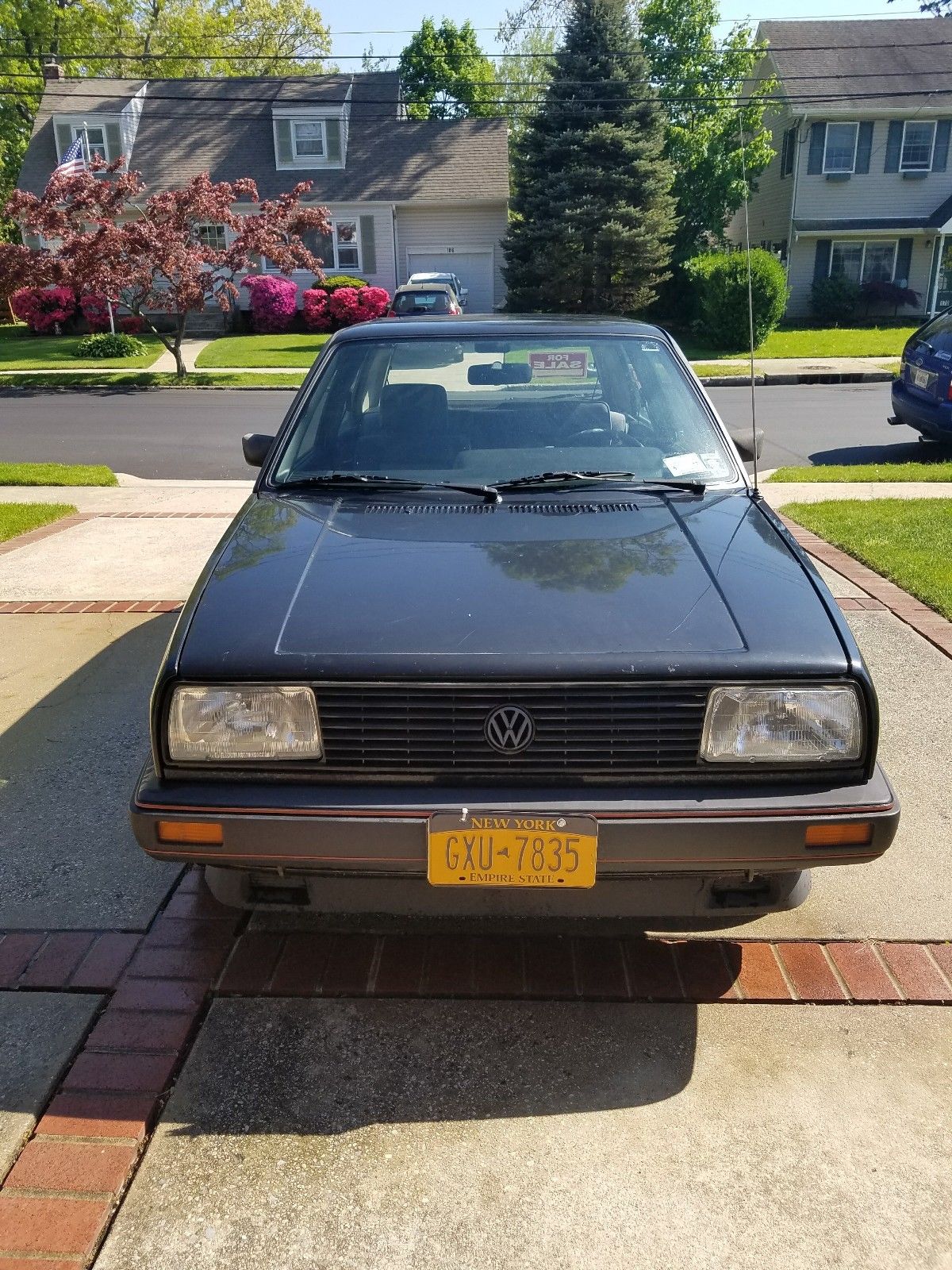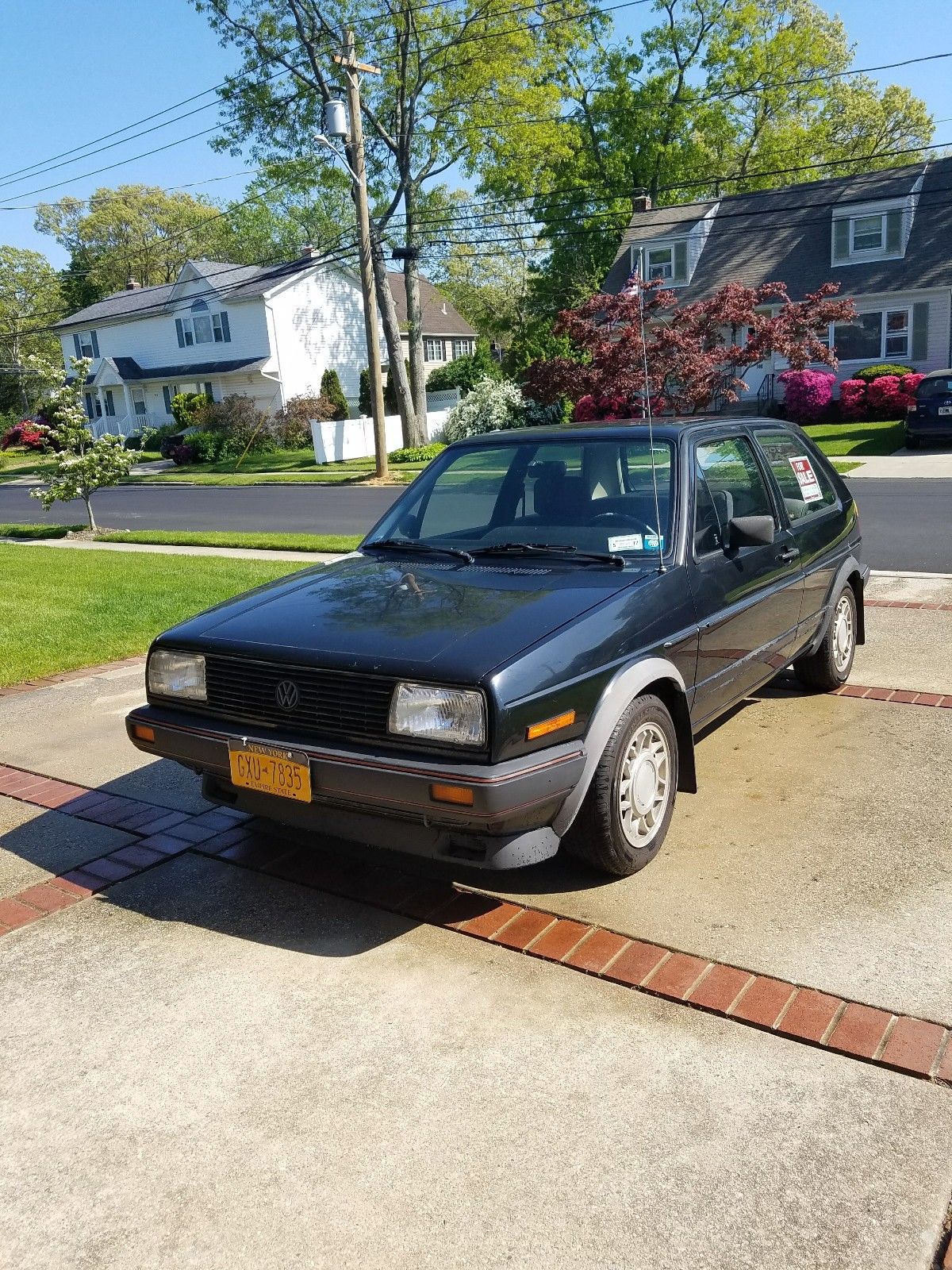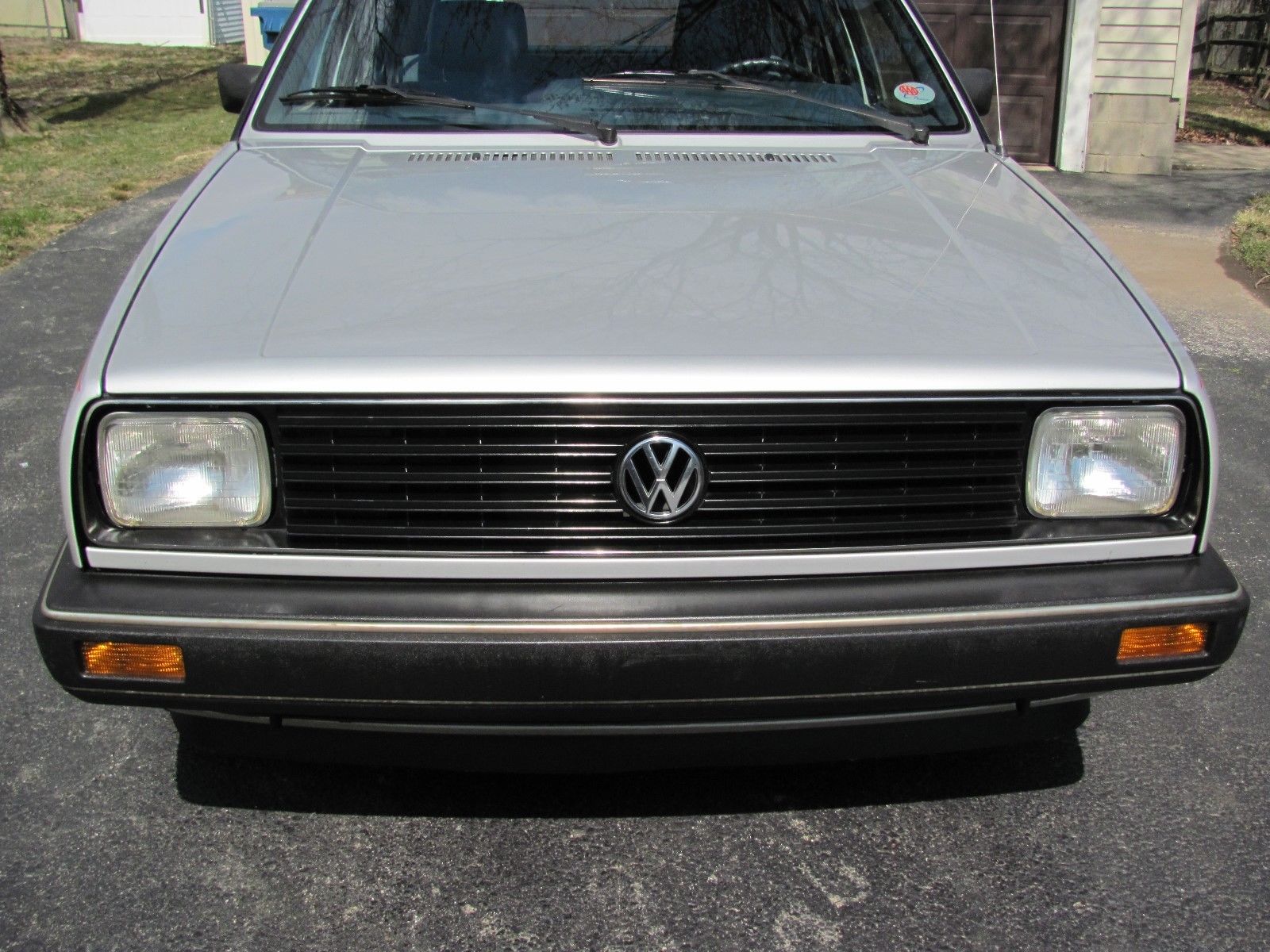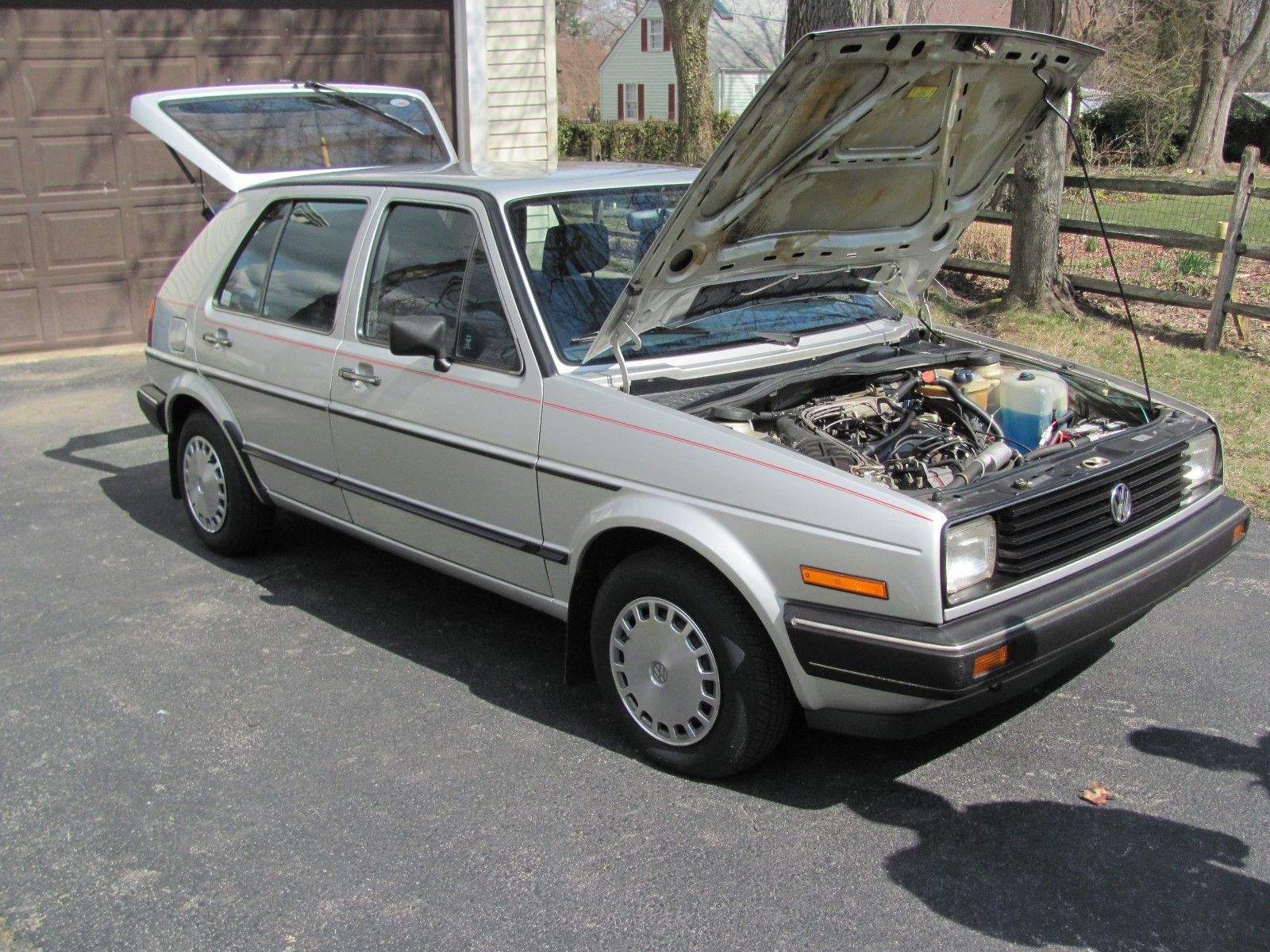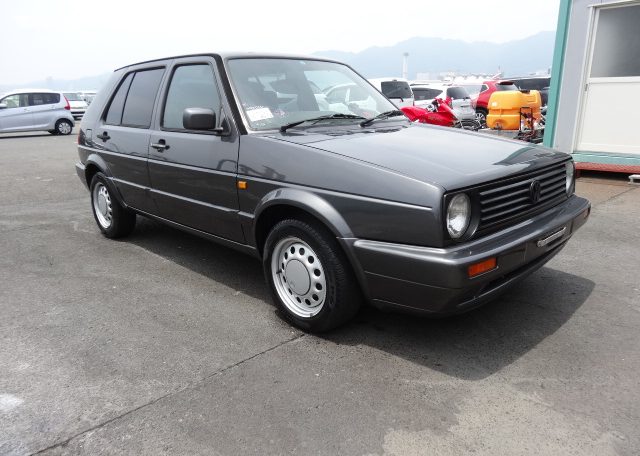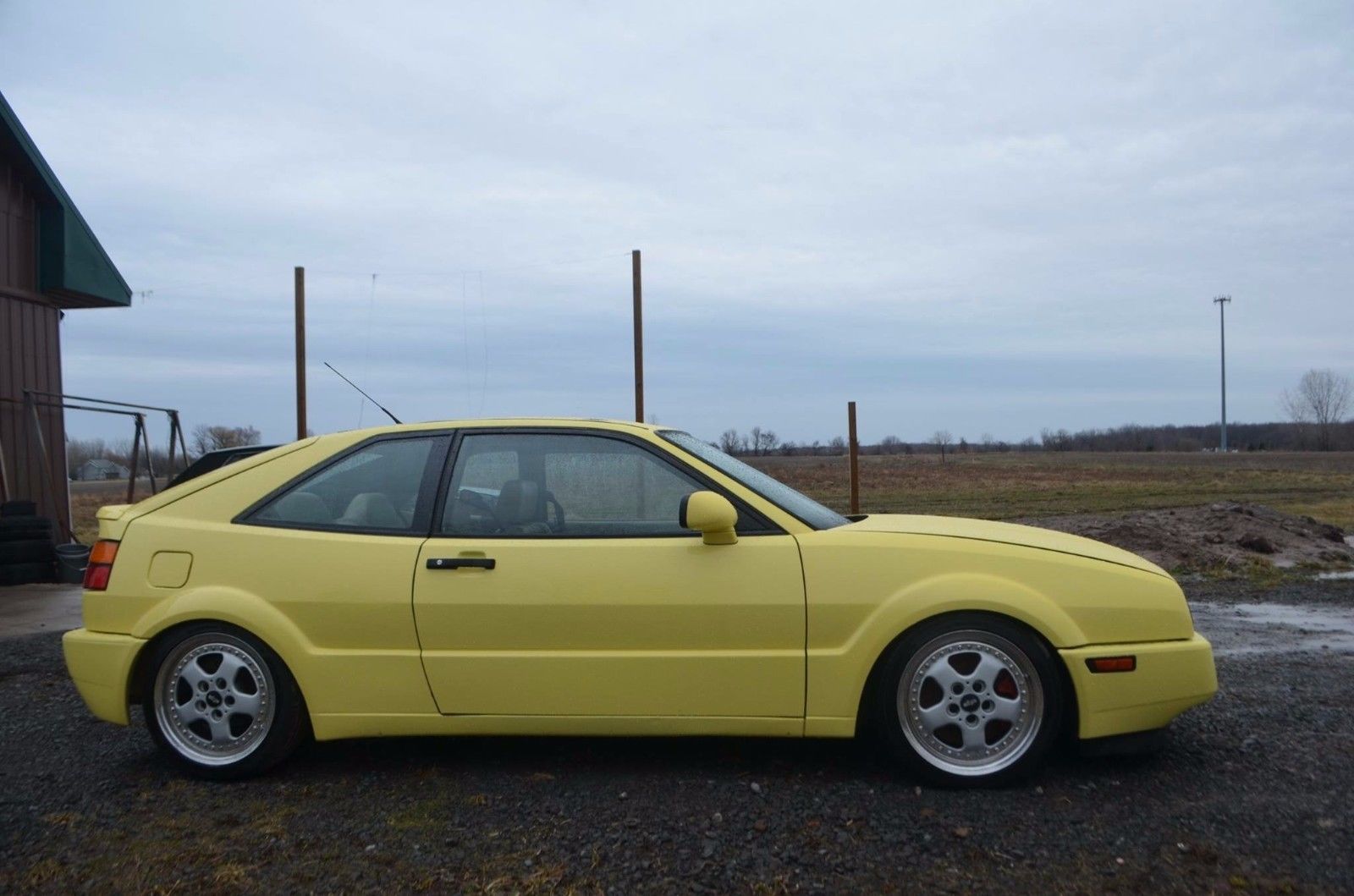Back to the Golf. A few days ago I looked at a pristine, original low-mileage ’85 Golf. A Westmoreland build, it was a very basic model. But your only other option in the first model year was the GTI, and it was a $2,000 upgrade over the basic Golf. Of course, for that amount you did get quite a jump in quality. Replacing the basic 85 horsepower 1.8 was a high-compression HT 100 horsepower unit. It didn’t sound like a lot, but that did represent a roughly 20% gain in power. Signature red-striped trim announced that this was the performance variant of the hatchback, and you also got 4-wheel discs as a first in the U.S. range. Those brakes hid behind carry-over “Avus” (Snowflake) wheels, though instead of the machine/dark gray finish the A1 had, they were now all silver and with “Volkswagen” imprinted on flush covers. Sometimes GTIs were equipped with “Montreal” (Bottlecap) alloys which were also shared with the Jetta GLI. Application seems somewhat indiscriminate. The GTI also had an upgraded suspension with front and rear sway bars and a close-ratio 5-speed manual as the only transmission. Of course, the interior was also upgraded with a leather-wrapped steering wheel borrowed from earlier GTIs, a multi-function display and specially-trimmed cloth sport seats. Unlike the prior GTI, the new model now also had flush-fitting aerodynamic glass headlights which were also seen on the Jetta, and later in 1986 the Golf Wolfsburg Edition.
In all, it was a substantial upgrade over the standard Golf, and you could of course further opt to include a sunroof, air conditioning, power steering, and a nice radio. Early U.S. Mk.2 GTIs were only available in Mars Red, Diamond Silver Metallic, or as seen here Black. Magazines fawned over the new GTI, which quickly established itself by winning Motor Trend‘s ‘Car of the Year‘ award. They proclaimed the model was “a case of specialized strengths plus broad flexibility — domination in some areas combined with sound capabilities in all others — to produce a commendable win.”
Today, those first two years of the GTI are quite hard to find. More popular were the later, much more potent 16V versions. But occasionally a really nice early example turns up, and here it is:
